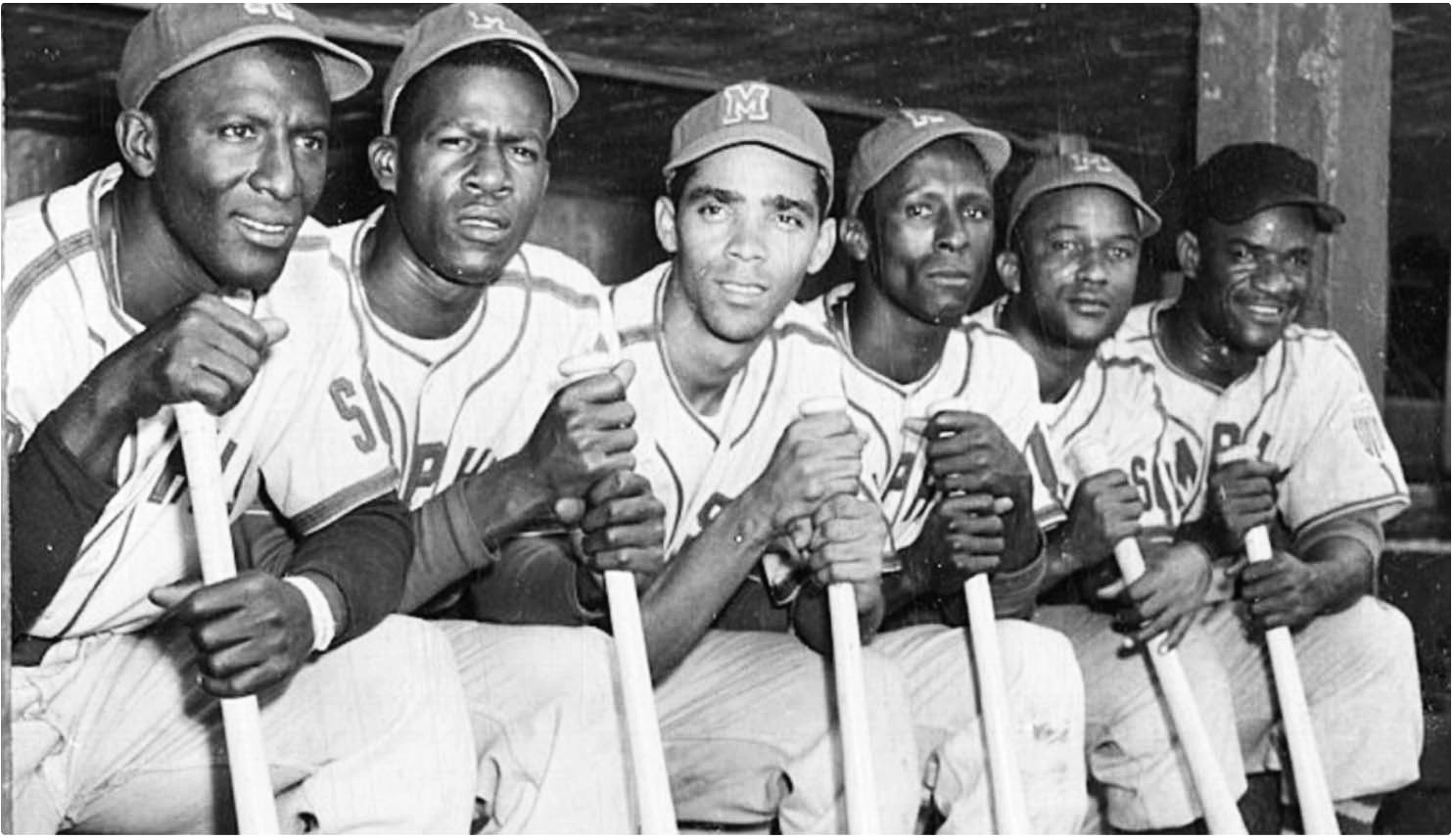This article was originally published both in print and online in the summer of 2019 – we have updated it and are republishing for the 100th anniversary this year of the Negro Leagues
By Rebecca Philips, with Mark Fleischer
The Negro Leagues had been around since the end of the Civil War before a team ever started playing in Memphis.
There were up to seven organized all-African American “major” leagues beginning in 1920 with the first references to a “Negro Major Leagues.”
The Memphis Red Sox & Lewis Park
One of the first known records of an organized southern African American baseball team in Memphis appeared in a Birmingham, Alabama newspaper in 1904 advertising that the Negro team from Memphis would be playing a series against its Birmingham Giants.
During the so-called Golden Age of the Negro Leagues, by 1921 there were two main Negro clubs in Memphis – the Memphis Union Giants and the A.P. Martin’s Barber Boys Baseball Club. Martin’s team played in Russwood Park, and by 1922 the two teams had combined players into one club and were calling themselves the Memphis Red Sox.
In 1923, with the rising popularity of the leagues during this Golden Age, the Memphis Red Sox, under new owner Richard Stevenson Lewis, started playing in a new ballpark – Lewis Park, on Iowa Avenue (now Crump Blvd) between Lauderdale and Driver/Cannovan (now Danny Thomas Blvd) – which seated about 3,000. It is said that it was one of the very first ballparks in America built specifically for Negro Leaguers.
Owner Lewis also owned R.S. Lewis & Sons funeral home, which would have a long tradition of caring for well-known members of the black community at their passing, including Dr. Martin Luther King, Jr.
For more on Baseball in Memphis, please read our related 2019 article

Clockwise from top-left: Memphis Red Sox owners outside South Memphis Drug Company on Florida St.; Red Sox catcher Clinton Jones; Martin’s Stadium ballpark, on Crump Blvd west of Lauderdale; 1959 historic aerial showing location of the ballpark; Memphis Red Sox players posing in the dugout; a car flipped on its side on Crump Blvd by Martin’s Stadium, view west on Crump.
(Photos courtesy Memphis Room of the Memphis Public Library)
The Red Sox, Martin Park & a Championship
In 1929, the Red Sox were purchased by the brothers Dr. J.B. Martin and Dr. B.B. Martin, and they rechristened Lewis Park as Martin Park. The brothers were successful business owners, and they added more bleachers and a rooftop to the ballpark, and built for the team a hotel near the field. The team was particularly profitable and well run.
The team played in the “minor” Negro National and Southern leagues in various years between 1924 and 1960, except for 1937 to ’38 or ‘39, when they were charter members of the Negro major leagues of the Negro American League. In 1938 the team compiled an impressive 21-4 record, won the First Half Championship, and jumped out to a two-game lead against the Atlanta Black Crackers for the second half playoffs.
However the series was canceled. Because of an apparent business conflict with the Atlanta team, the Black Crackers refused to play another game, and the Memphis Red Sox declared themselves the winners. It was a claim the team would repeat on their official scorecards in later years, as the “1938 Champions of Colored American League.”
But the Memphis Red Sox never played for the title again.
In the early 1940s one of the brothers in the ownership group, Dr. J.B. Martin, was run out of town for speaking out against Boss Crump. Dr. Martin went to Chicago in 1946, where he became president of the Chicago American Giants of the Negro American League before eventually becoming the head of the Negro league itself.
The Gay Hawk Restaurant – One of the last remnants of the Negro Leagues
Located at 685 South Danny Thomas Boulevard (a block and a half north of Crump Blvd on the former Wellington Ave, between East Georgia and East Carolina avenues), the Gay Hawk Restaurant was a favorite stop for the Memphis Red Sox players. As it was located not far from Martin’s Stadium, players living in the apartments down the left field line could walk there to eat. The Gay Hawk opened in 1951 and was also a fan favorite eatery for Memphis musicians and Stax Studio. ~Clarence Watkins, from his book Baseball in Memphis

“The restaurant was opened by Mr. Harris Scheuner, also the owner of Gridiron Restaurants, who catered to a black audience (when it wasn’t so popular to do so) until 1961. The restaurant sat empty for two years before it was offered to Lewis Bobo in 1963.” This Memphis landmark is still open today, owned and operated by Mr. Bobo’s daughter Terica Bobo. (quote and information from the restaurant’s GoFundMe page)
The End of The Negro Leagues
The Negro leagues created spaces for the black community to use for many other gatherings, a social connection point, and they were often some of the most successful businesses in their communities and the country. These businesses and the leagues began to lose their drawing power after Jackie Robinson broke the color barrier with the Brooklyn Dodgers in 1947, when Major League Baseball slowly integrated and recruited the Negro Leagues’ best players.
Once-successful black-owned businesses faded into oblivion with integration, and the Memphis Red Sox dissolved in May of 1960, ironically just a few weeks after Russwood Park burned down. Martin’s Stadium ballpark was demolished in 1961, and the last Negro League All-Star game was held in 1962. <>
This article came in parts from a 2018 Memphis Type History story and podcast by Rebecca Phillips, and from Mr. Fleischer’s contributions and research, some of which came from Clarence Watkin’s excellent 2012 book Baseball in Memphis.

